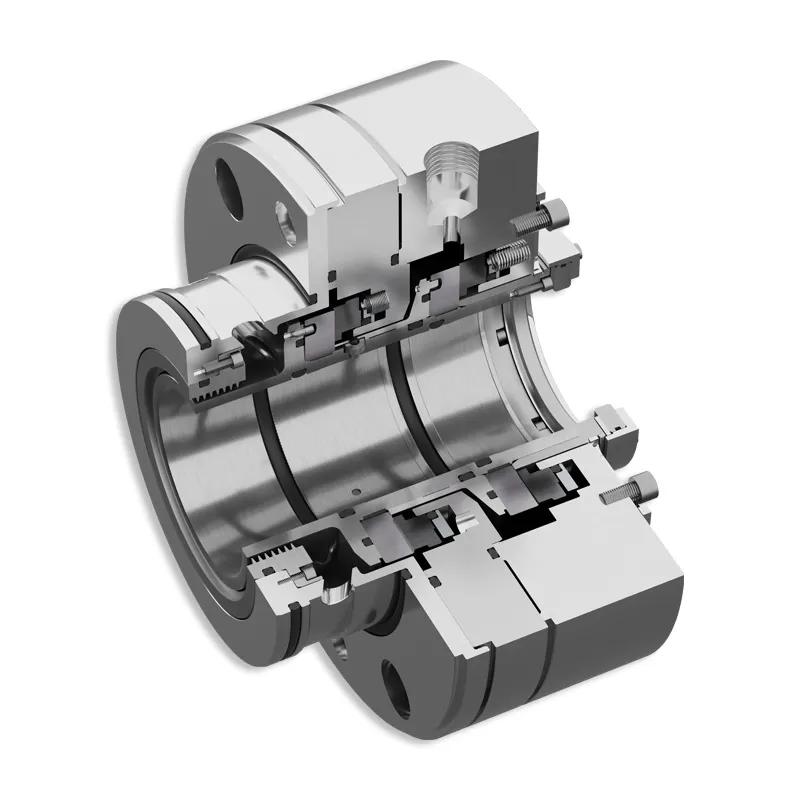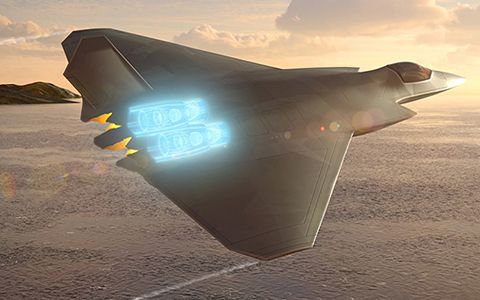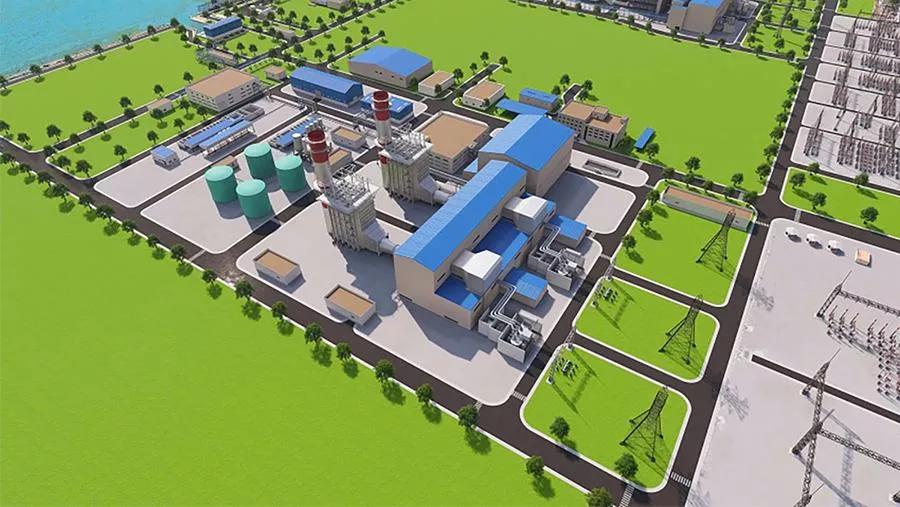Publication
Article
Turbomachinery Magazine
Western Turbine Users part II
Author(s):
Show highlights the many aspects of LM Series operations and maintenance.
The WTUI show covered all aspects of the maintenance and repair of aeroderivative gas turbines. Courtesy of MTU Maintenance.

The Western Turbine Users, Inc. (WTUI) show occurred virtually this year spread over three weeks. Due to print magazine deadlines, we could only summarize the first half of the event in the previous issue. Here are the highlights from the latter sessions:
Jason Miller, Director of Reliability for GridSME, provided an overview of the combustion turbine from the perspective of the California Independent System Operator (CAISO). He said gas generation has been rising in share over last ten years in the region.
“There is still a place for gas, especially in the peaking market,” said Miller.
He drew attention to the August 2020 period when the state suffered rolling blackouts (the same happened this year). Unanticipated high demand was satisfied by natural gas facilities despite heat-related forced outages. In Miller’s view, gas saved things from getting worse.
“There was no fault found with the gas fleet related to any the blackouts,” he said.
Miller also explained the need for natural gas generation to provide reactive power and grid stability. “Renewables are not synchronous machines, so you need reactive energy injected for frequency response and to stabilize the grid,” he said. He’s worried that bodies like CAISO and LA DWP are retiring a lot of rotating generators, particularly steam generators. That amounts to 3 GW of retirements in the next 4 years (1 GW this year). Over the same period, a large amount of battery storage is due to be added. Miller believes this represented an opportunity for gas turbines to work in tandem with battery plants to serve peaking and other markets
AERODERIVATIVE O&M
The last two days of WTUI featured vendors pro-viding insight and tips on aeroderivative gas turbine operations & maintenance. Rikki Blair, Director of Operations, EthosEnergy, talked about extending the life of assets. His company does reverse engineering using blue light scanning and 3D modeling as well as 3D prototyping using production 3D printing. A prototype is done in plastic. Once con-firmed it is then printed in metal. This can be aluminum, nickel, steel, cobalt, or titanium.
Blair laid out an LM2500 case study. It suffered compressor degradation despite a lot of offline water washing. GTE provided a high-pressure online water wash without detergent that raised availability by 2%, performance by 1 to 4%, reduced fuel consumption, and lowered emissions. It also used less water that offline water washes and cut down the wash cycle from 110 minutes to 30 minutes.
Maintenance work being done on an LM2500. Courtesy of MTU Maintenance.

Another example discussed was an LM6000 controls retrofit for a Texas peaker. Four units at two different sites experienced reliability issues, slow start ups, and were not meeting output demands. An upgrade to poorly configured control raised output by up to 2%. It also solved grid synchronization problems to satisfy 10 min startup to full load condition. This was accomplished using the icon control system. The project also corrected UPS, power distribution, and wiring issues. Blair said EthosEnergy had done over 100 controls upgrades on LM engines.
Mcleod Stephens Jr., General Manager at Braden Filtration, followed with a briefing on the history of filter cartridge design, media, styles, and evolving technologies. He laid out the various factors to consider in selecting the right filter for the right turbine and environmental conditions.
Maintaining and upgrading LM series turbines to reliably meet the demands of today’s grid, with the topic chosen by David Cicconi, Turbine Business Development Manager at Emerson. The focus of that session was on upgrade options avail-able to users of legacy Woodward and GE control systems. Using a case study of a recent project, he detailed a variety of upgrade solutions and enhancements available for these units, as well as some lessons learned to ensure success in managing such an upgrade.
For example, he mentioned Ovation control optimizations that could be done to improve the reliability and on-time dispatch of automatic pre-start. Another feature, automatic NOx water adjustment instantaneously compensates for variation in ambient conditions. Emerson offers a retrofit for some Woodward and GE systems. This drop-in replacement matches the footprint, is easy to install, and fully factory tested.
Monitoring the health of bearings was the topic presented by Simon Wilson, Sales Director, Energy & Industrial, GasTops. He explained that bearing damage events and unreliable detection technologies are causes of unplanned shutdowns in aeroderivative gas turbines. Damage typically occurs gradually over time and may be predicted in advance using detection technology. GasTops offers Oil Debris Monitoring (ODM) and MetalSCAN online condition monitoring as well as oil, filter, and chip analysis.
ICE BLASTING
Field Results from ice blasting were outlined by Bobbi Monacelli, President, US Cleanblast. He tied this into high-pressure compressor (HPC) efficiency improvements and overall life extension. He touched upon performance tests on ice blasting by GE, which revealed improvements in com-pressor efficiency, increased mass flow, and a MW power gain.
The process is used to eliminate dirt and hydrocarbons in the compressor, which lead to lower power. Monacelli said that if water washing is becoming less and less effective and a borescope inspection shows that the machine is dirty, ice blasting is a possible option.
A plant in Georgia, for example, gained 3 MW by using the technique on an LM6000. The HPC and casing was cleaned by ice in only 12 to 18 hours. This resulted in no damage to the substrate. As well as being much faster than cleaning by hand, the compressor is much cleaner when ice is used.
The following session featured Bob Tollett, Director of Marketing, at Liburdi Turbine Services. He covered how to maximize component repair yields to reduce engine overhaul costs. His company is involved in a great many hot section combustion repairs, as well as first and second stage blade and nozzle repairs. He recommended blade alloy rejuvenation to return blades to an as-new state. He also touched upon vacuum-heat treatment to restore the micro-structure and improve the creep strength of components.
Many users deal with grid stability and frequency response issues. Mike Toll, Account Manager at Woodward, took up this subject during the last day of the virtual WTUI event.
“Grid fluctuations are caused by imbalance of electrical supply and demand,” said Toll. “Without compensation, the frequency varies with generation and load changes.”
If, for example, consumption is greater than production – perhaps in the early evening if there is no wind would – frequency drops. If consumption is less than production – perhaps the middle of the day when the sun shines and the wind blows – the energy produced has nowhere to go and frequency rises.
There is still a place for gas, especially in the peaking market," said Jason Miller, Director of Reliability for GridSME.
Toll detailed various control system approaches to dealing with frequency and instability challenges. Droop, for example, is a control method that automatically varies gas turbine out-put in response to changes in frequency. When grid frequency decreases, unit load increases, and vice versa. He also touched upon local MW set-point control, automatic generation control (AGC), remote MW setpoint, and primary frequency controls that can be implemented.
WTUI tries to cover as much ground as possible related to LM series O&M. The last few hours of the show featured a great many topics. Patrick Jansen, Chief Services Officer, VBR Turbine Partners, promoted Decide, a system that tracks the component behavior and degradation over time. It combines historical and ongoing engine health condition monitoring data to provide predictive maintenance. Jeff Bause, CEO of Noxco, presented on emissions compliance. Pierre Ansmann, Global Marketing Director, Arnold Group, educated the audience on thermal insulation for LM2500/6000 exhaust collectors as a way to reduce package temperature. Florian Winkler, Marketing Manager, EMW filtertechnik, covered the benefits of (H)EPA GT air intake filters. His presentation helped users to make better filtration choices. Finally, Jon Neal, Head of Global Field Service at Brush Group, tackled how to avoid forced outages through site-specific preventive maintenance of generators based on operating condition and environment.
The 2022 WTUI show will take place from March 27-30 in Long Beach, CA. For more information, visit WTUI.com
Newsletter
Power your knowledge with the latest in turbine technology, engineering advances, and energy solutions—subscribe to Turbomachinery International today.






